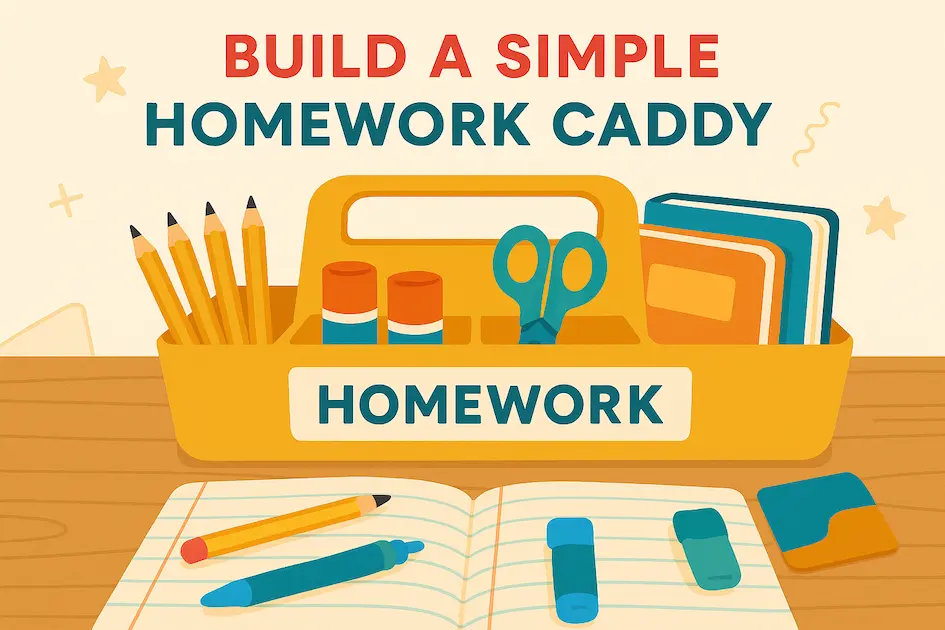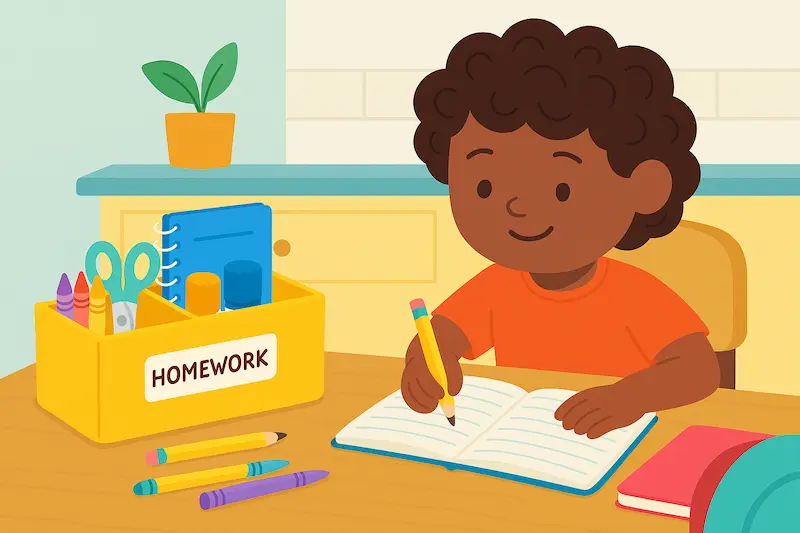How to Build a Simple Homework Caddy That Keeps Supplies Handy
If school supplies seem to disappear the moment homework time starts, you’re not alone. Pencils vanish, glue sticks go missing, and someone’s always borrowing the only pair of scissors. That’s where a portable solution comes in. When you build a simple homework caddy, you’re not just organizing — you’re creating a focused, grab-and-go station that helps your child stay on task and cuts down on the chaos.

What We’ll Cover
- Why homework caddies work for all ages
- What to include in your homework caddy
- Tips for organizing supplies in small spaces
- Affordable caddy ideas and how to personalize them
Why a Homework Caddy Helps
A homework caddy is a portable organizer filled with basic school supplies. Unlike a fixed homework station, it can move from the kitchen table to a bedroom desk or even the car during busy afternoons. The goal is to keep everything your child needs in one spot, so you’re not scrambling to find sharpened pencils or glue when it’s time to sit down and work.
Pairing a caddy with a dedicated homework station works especially well — the station provides a consistent space, and the caddy provides flexibility.
Step 1: Choose the Right Container
You don’t need to buy anything fancy to build a simple homework caddy. A shower caddy, utensil tray, desktop organizer, or small plastic bin with compartments will do the trick. Look for something lightweight with handles, so your child can carry it independently.
Quick Tip: Caddies with vertical storage (like cups or dividers) make it easier for kids to see and grab what they need.
Step 2: Stock It with Essentials
What you include will depend on your child’s grade level, but here are some commonly used supplies for a K–5 homework caddy:
- Sharpened pencils and erasers
- Crayons or colored pencils
- Scissors and glue sticks
- Ruler, highlighter, and small sticky notes
- Lined paper or a spiral notebook
- Mini pencil sharpener and tape
If your child uses specific tools — like ballpoint pens or mechanical pencils — include a few extras. Check out our guides to the best ballpoint pens and mechanical pencils for students for high-performing picks.
Step 3: Personalize It
Kids are more likely to use their homework caddy if it feels like their own. Let them decorate it with stickers, paint, or their name. You can even color-code sections if they share it with a sibling.
Need a notebook that fits well in a caddy? Our guide to the best spiral notebooks for school includes some wide-ruled options perfect for younger students.
Step 4: Keep It Clean and Up to Date
Every few weeks, take five minutes to restock missing items and remove dried-out markers or tiny pencil stubs. Keep a small stash of refills nearby — extra pencils, glue sticks, and paper — so you’re not running low mid-assignment.
“A tidy homework caddy makes it easier for kids to get started — and stay focused.”
Small Space? Try These Caddy Hacks
Short on counter space or don’t want your table taken over? Try these space-saving tricks:

- Use a rolling cart with pull-out bins
- Hang supply pockets on the back of a door
- Store your caddy in a cabinet or under a bench
These ideas work especially well for families with more than one child or shared homework areas in compact homes.
Final Thoughts: Make Homework Easier, One Caddy at a Time
When you build a simple homework caddy, you create more than just an organized space — you create a smoother after-school routine. It’s an easy win that saves time, reduces stress, and helps your child stay on task. And once it’s set up, you’ll wonder how you ever got by without it.
Looking for more ideas? Check out our tips on how to organize school papers at home or build a full homework station that keeps your family on track.
